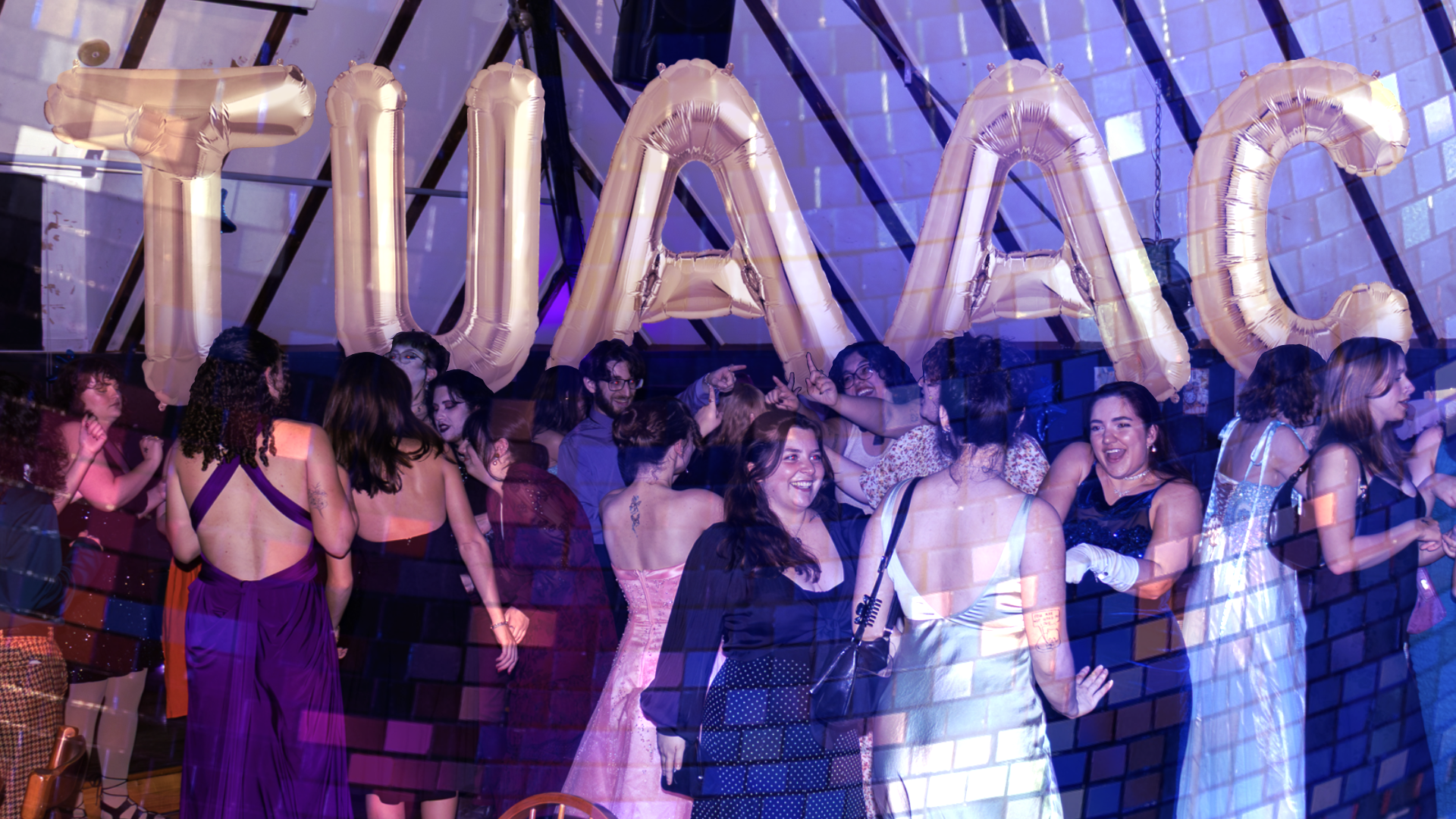The day-to-day lives of most trans people carry with them a certain number of intricacies that few people can hope to thoroughly understand unless they have lived a similar experience. Decisions ranging from how we dress, to how we carry ourselves in public, to even the voice in which we speak are informed by truths we understand about cissexual society. Conformity is thus, by-and-large, a method of protection for transgender people, a defense mechanism against those who would be outwardly hostile towards us. The design of social infrastructure is therefore a key concern in trans peoples' quotidian existence. Perhaps nowhere is this more evident than the omnipresent boogeyman of the “bathroom debate.”
For most, picking a place to pee is a pragmatic matter, involving little, if any, thought. For trans people, using a public bathroom under any circumstance is often a laboriously involved process. The social panopticon of gender policing aside, picking a bathroom often presents a dilemma even before you make it through the door. While most trans people would be far more comfortable using the bathroom of their preference, sometimes doing so can engender an uncomfortable response from the cisgender people who use it, to the point of putting trans people in physical danger. Gender-neutral bathrooms offer respite from this fresh hell, but their accessibility remains unreliable at best in most places. Thus trans people are frequently required to plan around having a safe space to use the bathroom for any public excursion, and are often forced to go out of their way to find a gender-neutral washroom they can use safely.
“The only ones that I’m aware of are the ones in the Bata Library and the one in the Student Centre,” said second-year Social Work student Grayden Hatherly, responding to a call for trans students at Trent to share their experiences for this article. “I find when I’m in other buildings I have no idea where the closest gender-neutral washroom is.” This experience is one with which many trans people likely empathize, yet it’s something even well-intentioned cis allies often fail to grasp the intricacies of. Despite Trent University’s commitment to a more equitable bathroom policy, gender-neutral washrooms still seem vanishingly rare on campus, and recently have become the catalyst for conflict between students and administration.
Our story starts with a set of bathrooms in a highly trafficked area of Champlain College, right beside the Seasoned Spoon and just off the Champlain quad. For many years, students — sharing the common need of a place to pee — would treat the bathroom as more-or-less ungendered, simply a utility meeting a need. At some point, a benevolent stranger would go as far as to affix a label to the washroom in the hallway declaring it to be an “all-gender” bathroom. It was then, around August 2020, that the university would first take note.
Initially, the response from administration would amount to little more than affixing a gendered indicator to the washroom in question. As the mysterious public sponsor continued to replace the label, these passive-aggressive actions from administration redoubled in prominence and appearance of officiality. At this point, members of the community, frustrated by the repeated institutional partitioning of a bathroom they’d previously used without much trouble, went before administration to plead the case for a gender-neutral bathroom in Champlain’s more accessible areas. Administration replied that the budget for that year had already been written, and given the ongoing nature of the pandemic, they lacked the resources to address the issue.
Then, in September of 2020, students and community members grew more concerned when transphobic graffiti began turning up in the bathroom, at the time designated a “men’s” washroom. Photographic evidence in hand, students returned to administration to plead their case, going so far as to involve the Office of Human Rights.
When Arthur re-articulated these facts to the university, they responded that “The exterior door of the washroom facility was subject to graffiti with permanent marker to label the washroom as all-gender. The Facilities Management department removed the graffiti and reinstated the women’s washroom sign.” No mention was made of any of the transphobic graffiti which was reported to the Office of Human Rights and Arthur. Despite their ostensible ignorance to the occurrence, administration assured Arthur that they “[have] educational initiatives, services and supports to help ensure that trans and gender non-conforming students feel safe and welcome. These include Out on Campus, Gender Journeys, and partnerships with 2SLGBTQ+ student groups.”
Furthermore, they “recognize that trans and gender non-conforming students experience additional barriers and safety concerns, and we are committed to continuing to expand resources, and urge any students with concerns to contact Student Affairs for support.” It is worth drawing attention to the fact that students did in fact reach out with their concerns but were told there was nothing to be done on the part of administration.
Then, early this year, the University quietly secured funding to renovate both bathrooms, but rather than examine the possibility of making even one of these bathrooms inclusive, the university proceeded with cosmetic remodelling of both washrooms while keeping them gender-separated.
When asked for comment on the situation, administration stated that;
Facilities Management has consulted with Champlain College and the Centre for Human Rights, Equity & Accessibility to explore options to convert the washrooms near the Seasoned Spoon to gender-neutral washrooms. Facilities Management evaluated the state of the washrooms, the building configuration, and budget required to convert the spaces into gender-neutral facilities. With the requirement to follow the Ontario Building Code regarding ratios and total numbers of toilets in the building, as well as the budget allocated for this project, it was not possible to change these washrooms to gender-neutral spaces at this time, and the project proceeded as a renovation as opposed to a reconstruction.
As it stands, gender-neutral washrooms are not the easiest to find on campus. Many students told me they need to go out of their way to the Student Centre or the library to find a bathroom they know to be gender-neutral, rather than hunting around the colleges to little avail. Said Mikaela, a first-year student who was kind enough to talk to me: “[Administration is] doing some things fine. Almost what I would consider bare minimum stuff, like having gender-neutral washrooms, and even then most of them are single stall.” A common complaint seemed to be a lack of signage and clear designation of gender-neutral washrooms. While Trent assured Arthur that “Gender-neutral bathrooms are available on the ground floor of the towers in Champlain College,” and that “A list of the gender-neutral washrooms on campus is available on the CHREA website,” every student I interviewed admitted they found accessible bathrooms hard to find at times.
This debacle would seem to be made worse by the fact that Trent seemingly benefits from a reputation for being an inclusive learning environment. When I interviewed Cameron Ewing, a fourth-year Canadian Studies student and Co-President of the Traill College Cabinet, he relayed an anecdote about Trent’s reputation with others. “When I was in high school in 2018, I was talking to my guidance counsellor. I was like ‘I’m really stuck between Trent and like, another school,’ and he was like ‘Trent University? Where’s that?’ ‘Oh, it’s in Peterborough,’ and he’s like ‘Oh yeah, I remember that place’... apparently when he was in university he and his buddies would go to Peterborough and there’d be so many hot girls here and they’d all be lesbians. And that was the first thing I really heard about Trent, was like, ‘Oh yeah, all the girls are hot and lesbian.’”
As funny as that story may be, it points to a history of Trent being seen as a queer-inclusive campus, dating back at least several decades. Student organizations such as the Trent Queer Collective and Centre for Women and Trans People directly engaging with the community, and both Trent Radio and Arthur offer diverse media coverage and publication (including Arthur’s very own Queerlines). However, while a culture of inclusivity has certainly grown up around Trent-affiliated levy groups, the university itself seems hesitant to officially embrace this position. While many students will tell you such-and-such a residence is the “Gay College,” there is (officially, at least) no such thing (R.I.P. Peter Robinson College).
“I do think on the outside Trent projects that we’re inclusive, everybody is welcome here,” says Hartherly. “Somebody said to me once that they thought Trent was a liberal arts college, and that’s what they project, but it’s not. They are a lot of words, and not a lot of action really.”
The university’s response, both to the initial concern brought to administration and to Arthur’s later investigation, seems to be one of targeted ambivalence. Despite this being centrally an issue of campus accessibility, administration denies their ability to meaningfully change anything, citing building codes, heritage designations, and other factors which are “out of their hands.” Western University used a similar tactic to deny responsibility for the construction of gender-neutral bathrooms, publicly saying that the washrooms were for everyone to use and that they condemn bathroom policing. While that might be the case, bathroom policing remains an omnipresent phenomenon, and one that not only trans people are subject to (see Jack Halberstam’s Female Masculinity). Studies show that rates of violence do not meaningfully increase in non-gendered bathrooms, despite that being a primary talking point of TERFs and transphobic hate groups.
Perhaps the issue at hand then is not as small as one set of bathrooms in one Trent University college. Indeed, transphobia — much like any structural form of oppression — permeates culture and politics while remaining superficially invisible. The bathrooms are merely a symptom of the greater cultural disease, but once you take notice of the signs, the big picture becomes difficult to ignore. When approached with this story, my source pointed me towards an episode of the 99% Invisible podcast about curb cuts, those subtle dips in the sidewalk you see at nearly every intersection. Prior to their widespread adoption, cities were extremely inaccessible to wheelchair users. Likewise, the persistent gendering of bathrooms is a norm that we scarcely think of, yet renders access to public spaces extremely difficult for a substantial population who possess particular accessibility needs.
“I find that Trent lacks resources for trans students,” says Cameron Ewing. “I found that the Trent Queer Collective (TQC) hasn’t done much. I’ve not seen them be active in meaningful ways, at least not in recent times. And I know Out On Campus have the meetings you have to be on the email list for, but I found it made me nervous to go because I’m like, ‘Oh, I don’t know if I’ll know anybody there’ and I can’t bring a buddy for support because I don’t have any other queer friends.”
“I get especially anxious when going into classrooms where the topic for that week is going to be gender,” says Hatherly. “I just know somehow the transphobia is just lurking in the background, and it’s gonna like, jump out at some point. You think eventually you would be ready for it to come and like, proverbially smack you in the face, I don’t think you’re ever ready for it.” Deadnaming, misgendering, and being the subject of many uncomfortable questions is not an uncommon experience for trans students, and are experiences which will likely persist for at least another generation of trans kids.
Bathrooms do not address all the needs of the trans community. Rather, like curb cuts, they are the subtle, structural indicators of a systemic cultural issue which is far more deeply ingrained than most living in blissful ignorance would like to believe. In the same way that ableism was not eradicated after the widespread adoption of curb cuts, transphobia will not disappear overnight even if gender-neutral bathrooms were to enter mainstream use.
As it stands, Trent University possesses little in the way of trans-inclusive infrastructure on campus. Sure, it’s nice that we have Out On Campus, and a few gender-neutral and single-stall bathrooms here and there, but neither of these make campus a fundamentally safer space. Bathrooms are just that, bathrooms, and if you expect trans people to feel ‘protected’ by the creation of infrastructure which affords them basic human dignity, I might invite you to reconsider your point of view.
When I started planning this article as far back as February, I set myself certain boundaries for my subject matter. I was not, I insisted to myself, going to make TDOV dour. The dominant narrative that surrounds most days dedicated to the trans community is primarily one of tragedy. Circumstances would, nevertheless, conspire against me.
Nine months ago, I wrote an op-ed for Arthur in which I examined the role of pride month in contrast to the then-contemporary debates surrounding kink at pride, and the rampant anti-trans legislation being passed across North America. It brings me no pride to say that my predictions not only remain sound, but are periodically vindicated by fresh waves of continued transphobic vitriol to this day.
Since that op-ed, I watched as countless more U.S. States released wave upon wave of transphobic legislation. In October, the tide swept north with the first reading of Quebec’s repulsive proposed Projet de loi No. 2, which would have introduced a new system of gender designation for ID which would have resulted in the mass-outing of trans people. All the while, the UK has continued to be a heated flashpoint of virulent transphobia, with both the Conservative and Labour parties marred by hateful screeds and the ongoing saga of J. K.- “born-again-TERF”-Rowling’s series of increasingly public and hateful Twitter meltdowns.
I only bring this up because independently of one another, each of the subjects I interviewed brought up their anxiety with the current trends in politics. To put it simply, it is an extremely terrifying time to be trans. Much of the ground gained by progressive movements seems to be being lost to reactionary backlash from the neo-Conservative and alt-right movements, with attacks on trans women in sport and access to hormone blockers forming the advance guard for a movement intent on legally mandating transness out of existence.
In comparison to this, bathrooms feel like a relatively small concern. However, they are an integral part of making sure trans people are allowed to participate in society, and are treated with the basic decency we should all extend to one another. To deprive anybody of a place to use the bathroom is to identify that group as somehow less than human, less deserving of dignity than everybody else. It’s important to remember this every day, but especially around TDOV, when discourses about pronouns and identity politics figure prominently while the material conditions of most trans people go overlooked.
Says Mikaela,
We're still here despite all of these attempts to get rid of us, and tell us we don't exist, and say that we're wrong like we're not going to let that happen. [TDOV]’s also a day to just show people who might not be out yet, or like younger trans people that like, there is a future come and you can be a trans person and be an adult or you can be a trans person and like have just a normal life.
Cheers Peterborough, I’ll see you at The Only where I’ll be drinking to that. At least there I’ve never wondered where I can find a place to piss.



.png)

.jpg)



.jpeg)


.jpg)


.jpg)





.jpg)




.png)